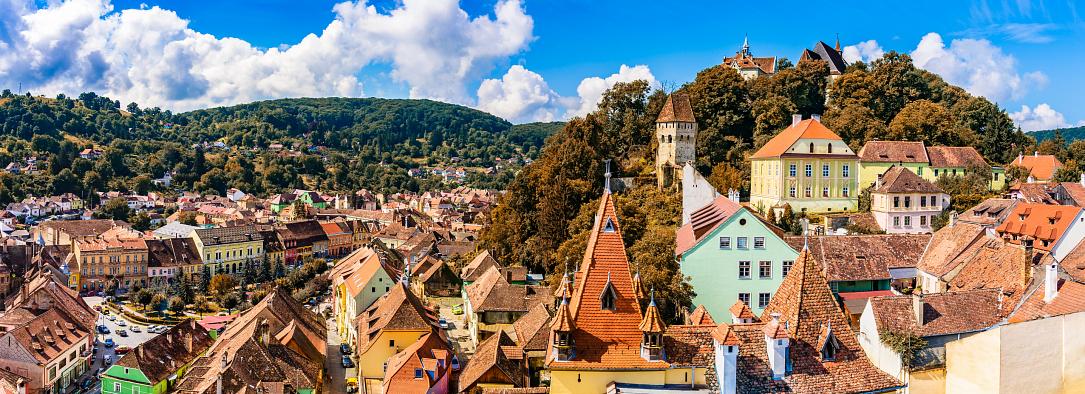Romania Photo of the Day by Dreamstime: Sighișoara Citadel in autumn colors



Sighișoara – known to the Germans as Schäßburg, to Hungarians as Segesvár, and also known by the Latin name of Castrum Sex - is one of the most beautiful cities in Romania. (Photo source - click on the number to get to the photo 138216094 © Photofires | Dreamstime.com)
Designated as a World Heritage Site by UNESCO, this perfectly intact gem of a city, with its towers, cobbled streets, burgher houses, and ornate churches rivals the historic streets of Old Prague or Vienna for atmospheric magic, says romaniatourism.com.
Founded in the 12th century by German craftsmen and merchants known as the Saxons of Transylvania, Sighişoara is a fortified medieval town that played an important strategic and commercial role in the history of Central Europe.
For several centuries, Sighişoara was a military and political stronghold. During the 14th - 16th centuries, the Saxon craft guilds erected towers around the citadel walls to protect the town from Turkish raids. Laid out on two to four levels, the towers stored ammunition and food supplies and were provided with firing windows for cannons, shells, and arrows. Of the original fourteen towers and five artillery bastions, nine towers and two bastions have survived the test of time.
Medieval structures that have withstood the centuries include the Blacksmiths' Tower (Turnul Fierarilor), Butchers' Tower (Turnul Măcelarilor), Cobblers' Tower (Turnul Cizmarilor), Furriers' Tower (Turnul Cojocarilor), Ropemakers' Tower (Turnul Frânghierilor), Tailors' Tower (Turnul Croitorilor), Tanners' Tower (Turnul Tăbăcarilor), Tinsmiths' Tower (Turnul Cositorilor), and the Clock Tower, also known as the Council Tower.
It is also the birthplace of Vlad Dracul, also known as Vlad Țepes (Vlad the Impaler), ruler of the province of Walachia from 1456 to 1462, and the inspiration for Bram Stoker's fictional creation, Count Dracula. His father was actually the first to ever refer to the city by its Romanian name Sighișoara in the documents he wrote about this area.
Like many other towns, Sighisoara suffered military occupation, fires, and plagues during the 17th and 18th centuries. Even so, it remained one of the best-preserved and most beautiful citadels in Europe. Today, having kept its authentic medieval architecture, the Sighișoara Citadel is one of the few in Europe to still be inhabited.
There is much to see here: the colorful Citadel Square, the aforementioned towers, the Covered Staircase (also known as the Pupils’ Staircase) leading to the School and the Church on the Hill, the Church of the Dominican Monastery, the house where Vlad Dracul is said to have been born, and the Medieval Weapons Collection housed here, as well as other interesting houses such as the Stag House, and the Venetian House.
Read more about this charming town here - Romanian cities: Sighisoara, the medieval citadel where Dracula was born.